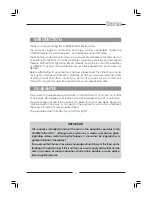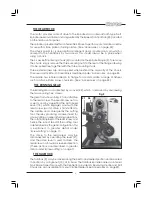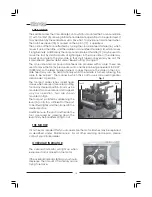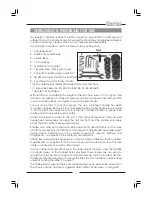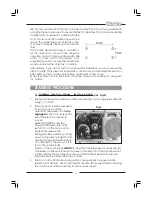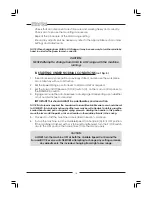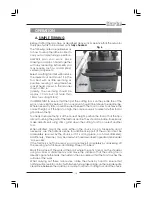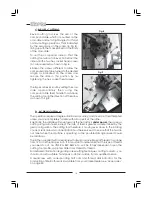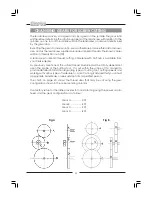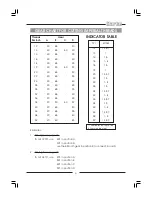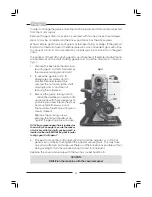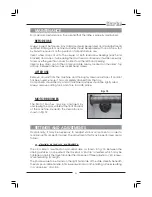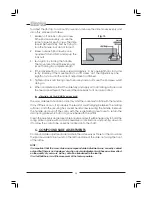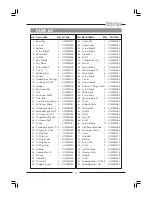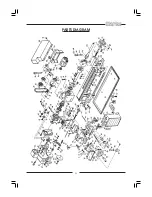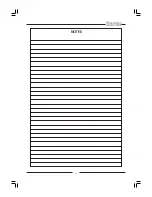
16
It may be necessary to adjust the position of the compound slide or reposition the
work in the chuck to guarantee that there is adequate clearance.
When satisfied retract the cutting tool
and wind the saddle away from the
headstock, then wind the cutting tool
up to the work, somewhere along the
length to be cut, whilst rotating the
work by hand, using the chuck.
Continue to advance the cutting tool
slowly, until it just touches the surface.
Record this position by zeroing the
scale on the cross-slide, i.e. turn the
moveable scale until the zero marks
coincide, (see diagram opposite).
Once zeroed, retract the cross-slide
one complete turn, then move the
saddle until the tool is a short distance
from the right hand edge of the work.
Wind in the cross-slide again one full turn until the zero marks again coincide.
IMPORTANT: If you go past the zero marks, back off again at least one half of a turn,
then slowly bring the marks back together.
Whenever you use the scale, as an indicator, to advance the cross-slide or
compound slide, ALWAYS use this procedure to align the marks. This is to take into
account backlash and other clearances in the gearing and slides etc.
Continue to turn the handle an amount equivalent to your desired depth of cut.
NOTE: We recommend that for rough cutting, you do not exceed 0.010” as your depth of
cut.
The setup is now complete to begin your cutting operation, but before starting,
check the position of:
a.Auto feed lever. Ensure it is in the UP position for manual feed.
b.Forward/Neutral/Reverse leadscrew lever. If Auto feed is not required, set to
‘Neutral’.
c. HIGH/LOW lever. Select required speed range.
Switch the machine ON as described under ‘Starting Procedure’ and slowly feed
the cutting tool into the work using the Manual Feed Handle. Proceed until you
reach the previously marked line on the work, then retract the tool one or two
complete turns on the Cross-Slide feed handle.
Wind the saddle back to the begining then wind the tool the same number of turns
‘IN’, plus the depth of desired cut, and proceed to cut once more.
NOTE: This describes the procedure for general, rough cutting. For other types of cuts -
finishing, cutting shoulders etc., you should consult a suitable handbook.
Fig 7
Summary of Contents for MetalWorker CL300M
Page 1: ...1 OPERATING MAINTENANCE INSTRUCTIONS 300mm VARIABLE SPEED METAL LATHE Model No CL300M 1008...
Page 4: ...4...
Page 29: ...29 PARTS DIAGRAM...
Page 30: ...30 WIRING DIAGRAM...
Page 31: ...31 NOTES...
Page 32: ...32...




